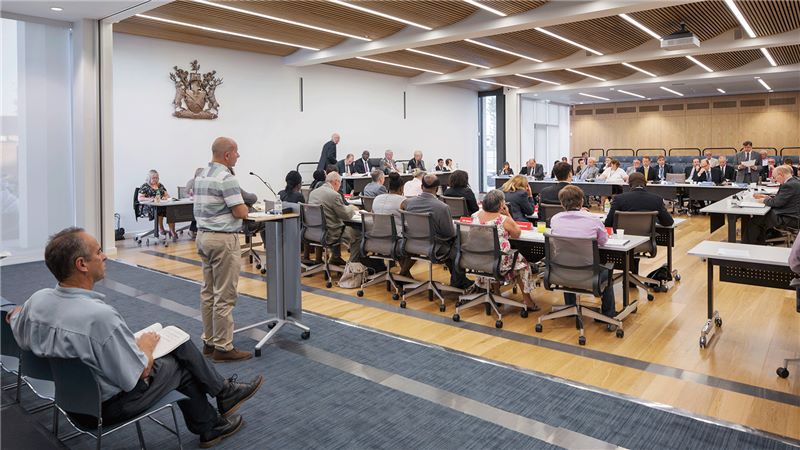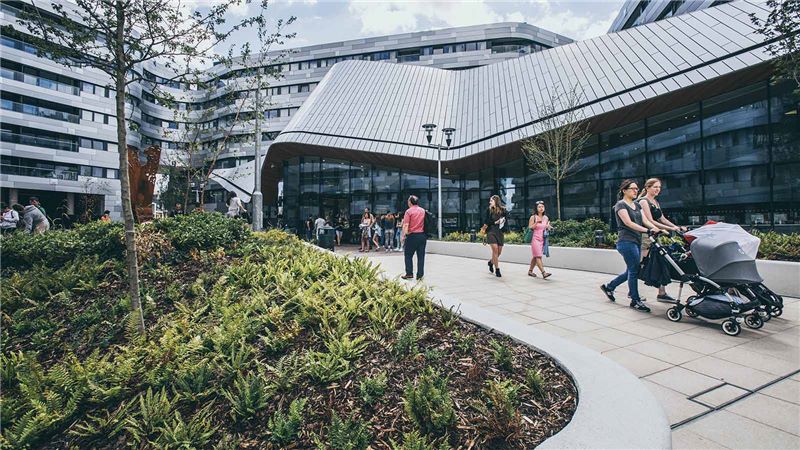Getting Britain building again
In Rachel Reeves’s first speech as the newly appointed Chancellor of the Exchequer, she confirmed the new government’s commitments to a nationwide housebuilding programme.
This included a promise to build 1.5 million new homes over the next five years, creating new towns across the UK, reinstating mandatory housebuilding targets on planning authorities, and unlocking previously constrained development opportunities, including on brownfield and greyfield sites. Combined with Labour’s promise to stabilise the economy, levelling interest and lending rates, this mission has the capacity to drive long lasting positive change across the country.
The built environment sector stands poised to drive this agenda through. However, to best galvanise investment and support local economies, they need to be delivered with a view to create places that matter, both now and in the future.
A place-first approach
It is essential that British construction firms build more houses to meet nationwide targets. Yet, properties delivered without proper care for the place that they’re in would be a serious misstep.
Placeshaping, therefore, must be at the heart of the government’s housebuilding agenda. Houses built separately to neighbourhood essentials, like local amenities, transport links, healthcare sites and access to employment opportunities will never mean more than the bricks and mortar that hold them up.
Of course, every place is different. Developers will need to take a holistic view of each site being built on, examining the factors that make each region unique and working to create cohesive environments where residents can thrive. This requires close collaboration with the local planning authority, and businesses and infrastructure leads, to ensure that any new neighbourhood meets the needs of both its residents and the wider economy.
Perhaps most important will be how developers bridge the gap between local and central government stakeholders. With the pressure on planning authorities to meet mandatory targets, local bodies will need to balance the need for development against opposition. The private sector can help drive the case throughout the planning process, ensuring that local authorities deliver projects that best benefit a surrounding region while meeting central government expectations.
Failing to achieve true collaboration risks isolating the communities who purchase these new properties or, worse still, properties becoming abandoned if unattractive to buyers.
Make use of SMEs and a wide supply chain
A key route to avoiding these outcomes is for national housebuilders to tap into local contractors and other SMEs as part of delivering new housing developments.
Regional suppliers are well placed to identify local needs and build properties that best support surrounding economies, alongside providing essential resource to meet the government’s housing targets. They will also be more able to source local materials for development, reducing overall carbon emissions in the supply chain, while their better understanding of a place can help minimise environmental impacts over the course of delivery while increasing biodiversity net gain.
With past housebuilding targets either being missed or scrapped, to best meet the ambitions of the new government our sector will need to work collaboratively with delivery at the forefront.
Mace partnered with Pinsent Masons to address this topic directly through an exclusive roundtable at UKREiiF 2024. Joined by Homes England we discussed the company’s Public Bodies Review 2023, which explicitly called for greater coordination with SMEs.
This is also a crucial part of creating a more resilient housebuilding sector nationwide. In Reeves’ speech, she was clear that a key component of Labour’s housing strategy is ensuring that the construction sector is robust enough to support their high ambitions. It is up to industry leaders across the built environment to make sure that together we can step up to meet this requirement.
Quality buildings for future families
Even if new houses are delivered at pace and with a place-first approach, they need to be outstanding properties built with current and future standards in mind. With our current building stock at risk of severely missing key targets, including energy efficiency or safety, we cannot allow for new buildings to fall into the same trap.
Developers therefore must not lose sight of aligning with industry best practice and ensuring that no matter how broad our supply chain, we maintain compliance with existing legislation. New properties built from 2025 must comply with the Future Homes Standard, ensuring new homes produce up to 80% less carbon emissions than those built under current regulations. Alongside this, all buildings need to align with the requirements of the Building Safety Act, particularly higher-risk buildings with at least two residential units and a height of at least 18 metres.
Alongside industry compliance, we also need to consider the mechanisms we use to deliver 1.5 million houses. It is a tall order by any measure, so we will need to be innovative in our approach to keep up with government ambitions without losing our focus on quality. Modern Methods of Construction, which puts an emphasis on off-site construction to be developed on-site, can significantly reduce resource pressures while improving overall safety and carbon emissions.
The incoming government has hit the ground running, being clear on how it is looking to work with the built environment sector to meet its housing targets and get the country building again. Our sector needs to react just as quickly, but we need to do so with a focus on quality as much as quantity. This requires a collaborative, delivery-centred approach to tap into the best our industry has to offer.












